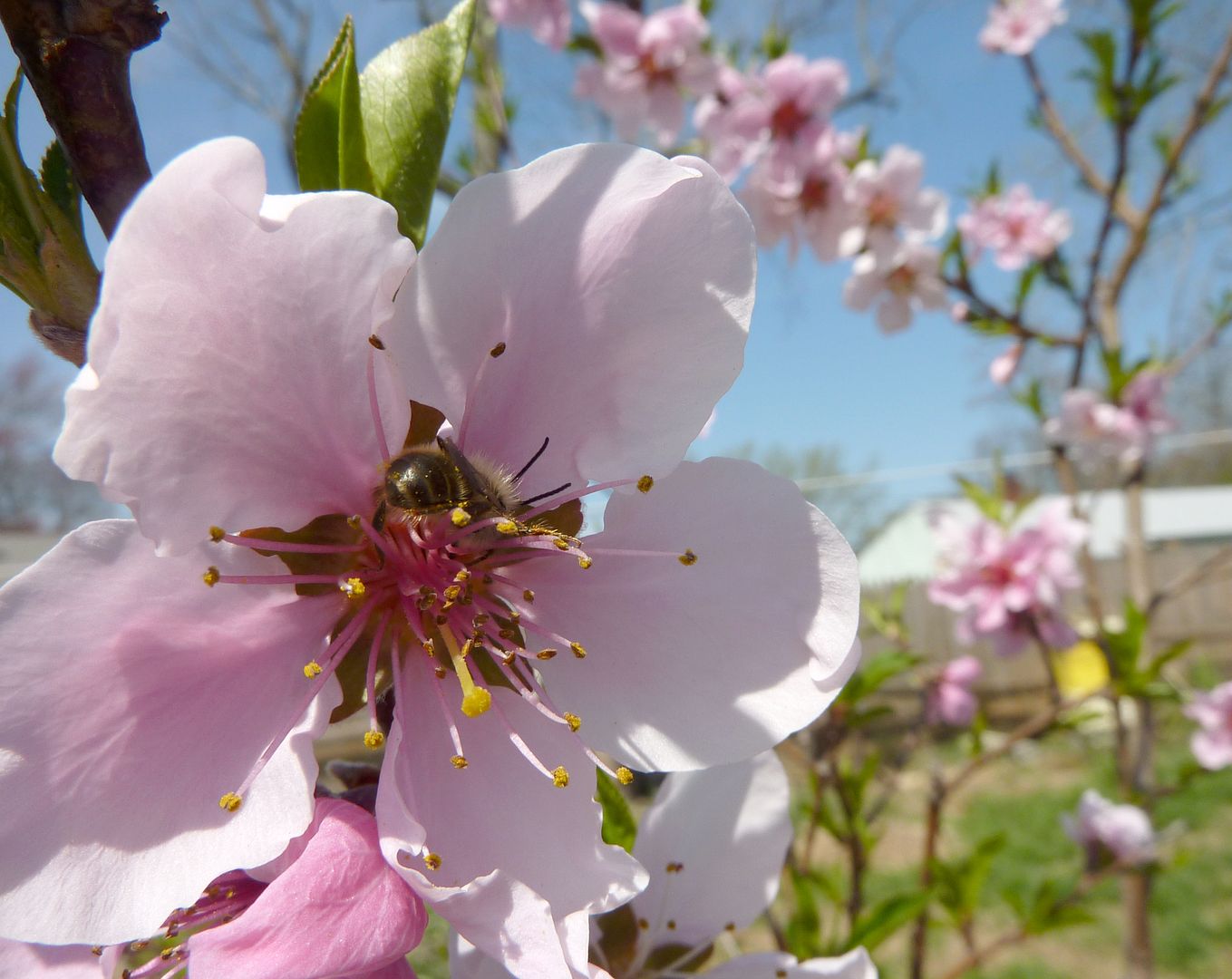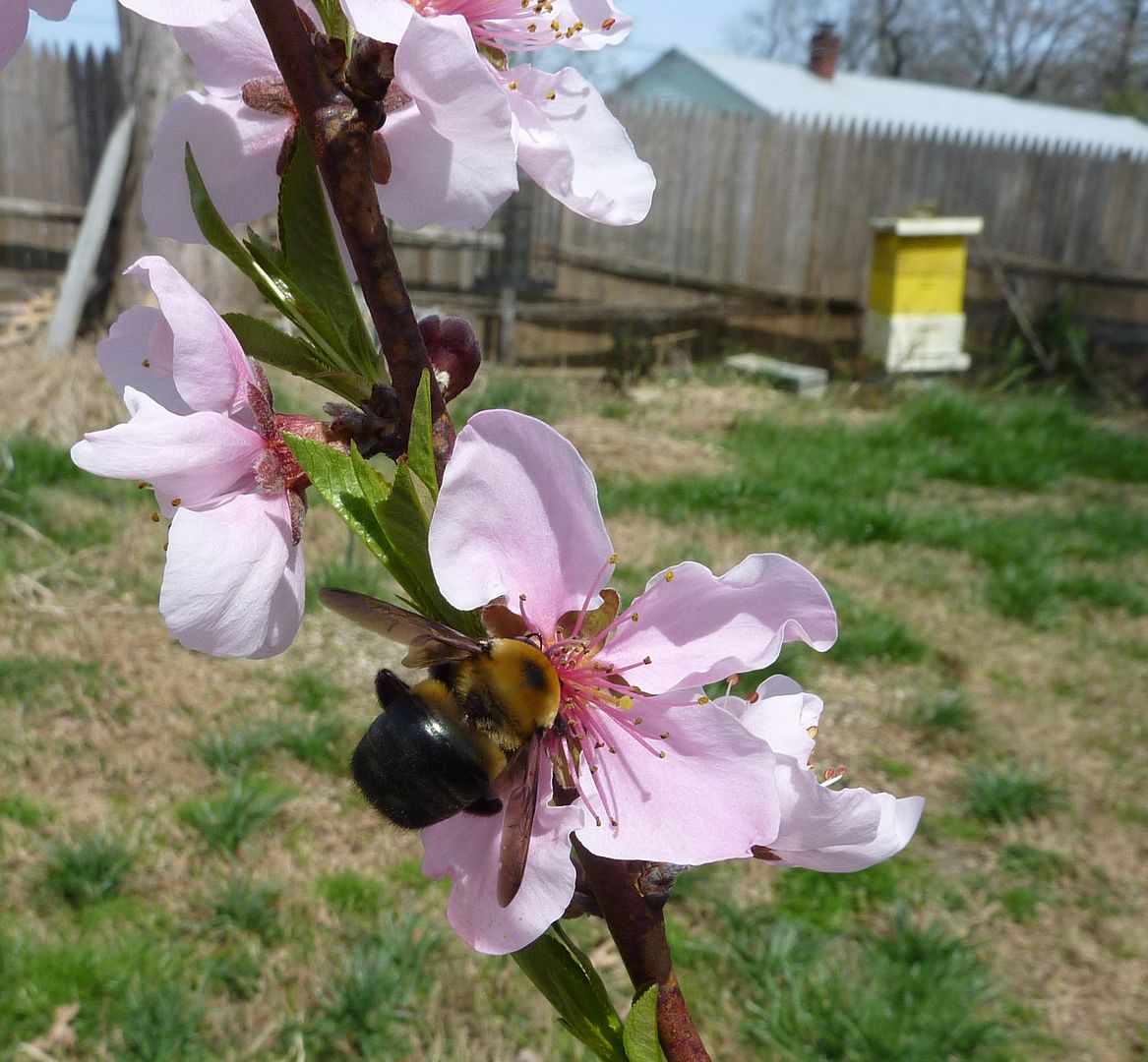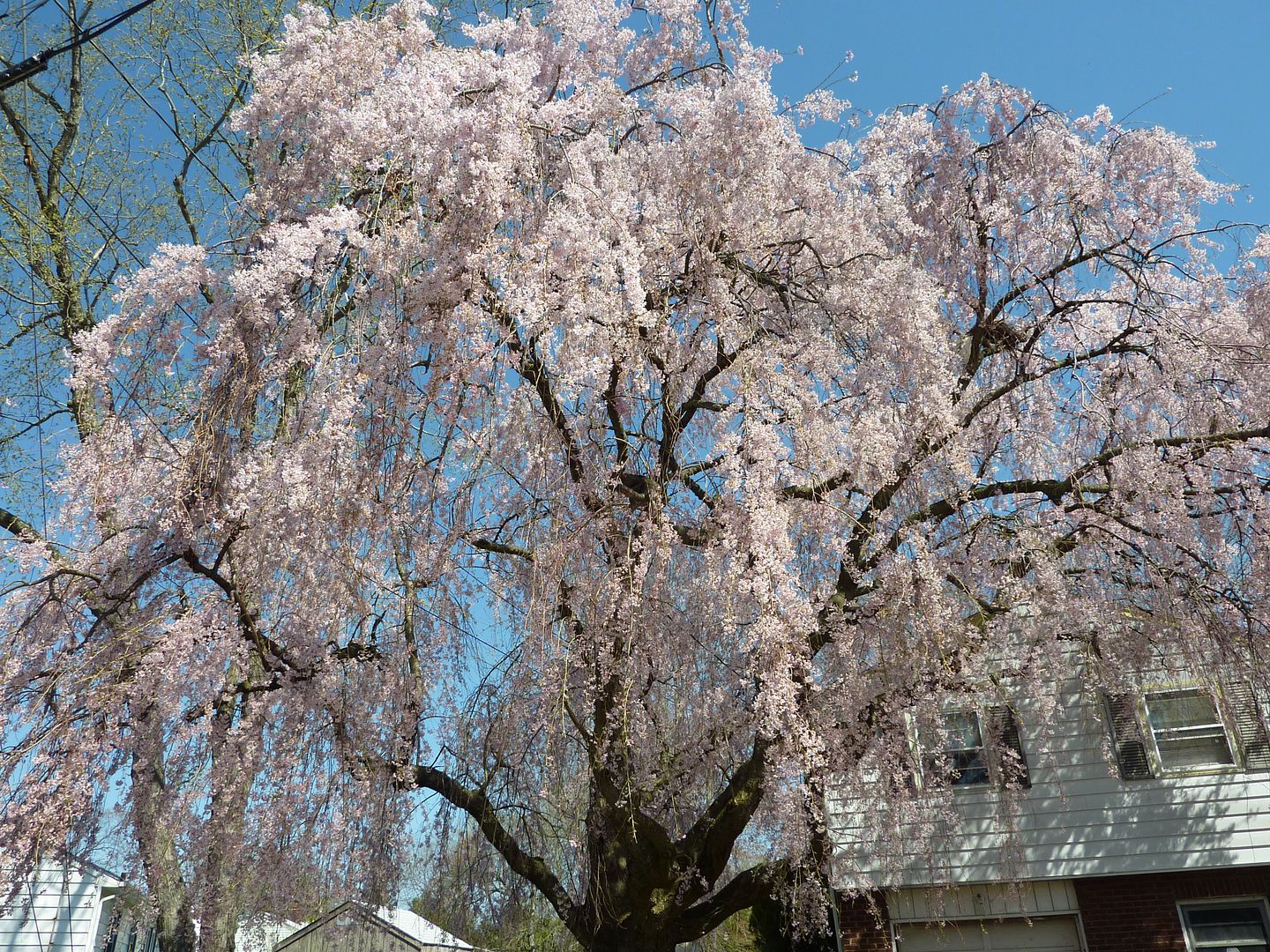Fruit trees have been blooming left and right here. The Nectarine tree in the middle of our yard is blooming nicely but the flowers seemed very short lived this year. Might have something to do with our skipping spring and rolling right on into summer and it's 90F weather. Thankfully the mason bees were there to pollinate it some.
Large Carpenter Bees, Bee Flies, a few Bumblebees, and what I think might have been the Blueberry Bee also pollinated it. Notice how I didn't say Honey Bee, and yet one of my hives is clearly viable in the background. The tree is far enough from the hive that workers can find the tree so that's not the problem. Honey Bees get distracted by large nectar sources. If I had a farm with a few dozen Nectarine trees, or whatever crop you like, then I'd be more likely to find a Honey Bee working the field. As it stands though a lone fruit tree, a dwarf one at that, just isn't usually worth their time.
Now the massive cherry tree out front with it's few hundred thousand blooms is another story. Just walking under this tree when it flowers you can hear a noticeable buzzing from the sheer number of bees working the flowers.
A neighbor's Magnolia tree with it's huge flowers had a similar buzzing coming from it. The fact is social bees like the Honey Bee are able to communicate where the best nectar sources are. This causes all of the foraging bees to only work one or two locations at a time. There are random scouts of course but their vote for where the foraging traffic goes is only as good as the patch of flowers they've found. That's why I didn't see a single Honey Bee on my Nectarine tree, or any other small fruit tree I have for that matter.
It's always good to be diverse and support other pollinators.



